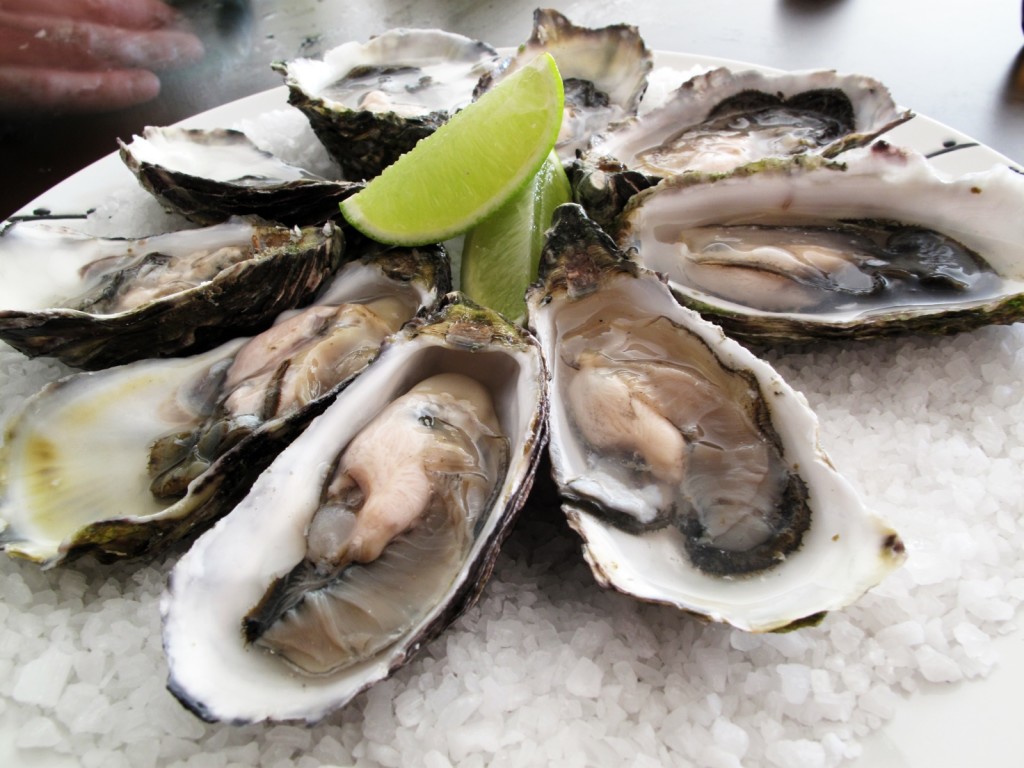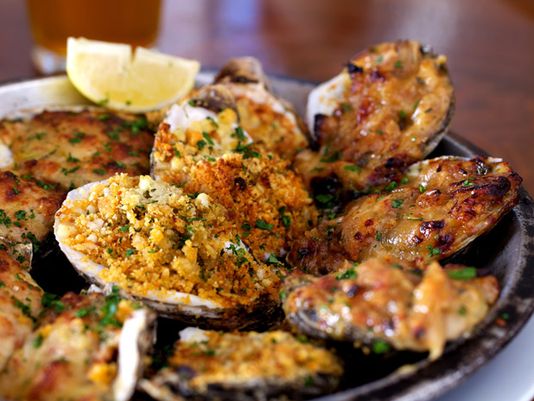Few foods divide the opinions of chefs as oysters. They are the Marmite of restaurant kitchens.
Some say the enigmatic bivalves are a silky snack of the gods. For others, they are slimy globs of sea rubbish that come with a high risk of making your customers ill with the direst of consequences for your career.
Their newly aristocratic reputation doesn’t help. Before they were made expensive by overfishing, they were plentiful and cheap – a way of boosting protein in meals, such as in steak and oyster pie – but more recently they’ve struggled not to be seen as a canapé for posh people.
As Britain has got more expansive in its tastes, however, oysters have mounted a comeback. The old rule about the British native oyster season is that it is months with an “r” in them, and they mark the start of autumn, so October is the ideal time to eat them. Restaurateurs have long hoped to get oysters back on menus, particularly as native stocks have recovered in recent years. And as awareness and interest in local food increases, so too has curiosity about oysters.

Is your stomach rumbling?
New restaurants, such as the Richmond in east London, are offering a wide selection of natives and imports, as well as oyster happy hours. They’re common on pub menus, which hasn’t been true since Victoria was on the throne. At street-food fairs you can often get your dude food with a side of mollusk.
Wednesday sees the start of OysterFest 2015, an annual celebration of all things oyster, at the Newman Street Tavern in London’s Fitzrovia, with proceeds going to the charity Action Against Hunger, and including renowned oyster restaurants Tom Aikens, Bibendum and Balthazar.
“A lot more places are offering oysters now – a bar here, a shack there,” says Tim Hughes, chef director of the Ivy Group, which includes the old oyster favourite J Sheekey in Covent Garden. “It’s a good thing. There has been a stigma about oysters, but there is something very pure about them, very clean. They are expensive, but partly it’s about education.”
It’s not only in London that things are changing. At the Applecross Inn, a popular seafood spot on the west coast of Scotland, owner Judith Fish has noticed an increase in business. “We’re selling far more than we used to – we’re probably doing 500 a week, which is not so bad for a remote West Highland pub.” She adds that they are a draw for tourists from beyond Britain. “The foreign visitors love the oysters from Scottish waters, especially the Italians and the Spanish.”
But even those who frequently enjoy oysters often don’t know what they’re eating, or what separates one variety from another. The quest to educate the public about oysters – and common misconceptions around them – has driven Cornwall-based oyster campaigner Katy Davidson to great lengths. Three decades after she tried her first oyster in France, she now styles herself the Oyster Lady and is in the process of creating the first-ever Master of Oysters qualification system.
“Nothing feels like an oyster when you eat it,” says Davidson. “I say ‘feels’ because there is more to it than the reaction in your taste buds. There’s some kind of primordial ‘oyster judder’ that sweeps across a person’s face when they eat a raw oyster. It is a multisensory experience.”
She says that their mystery factor is why oysters have been voted the least likely food a Briton was prepared to try. It also helps to explain why there are so many myths surrounding them: the idea that you can’t drink spirits with them (false), or that they are an aphrodisiac (false), or that you should only eat them raw (false – cooked oysters can be delicious).

Oysters are always delicious, even cooked
Creating a more egalitarian vision of oysters appears, at current restaurant prices in the UK at least, to be a challenging goal. And prices are unlikely to fall soon: oysters can be hard to farm. They depend on a huge range of factors: the temperature, currents, depth, rainfall and the type of food in the area. They can also be easily disrupted by dumping the wrong kind of waste on them, or the wrong kind of weather. Even at London restaurant prices, the margins are not high. But for Davidson it’s worth taking on.
“I want it to be similar to a Master of Wine,” she says of her qualification. “Oysters take on the characteristics of their environment – just as grapes take on the terroir of the land, oysters take on the ‘merroir’ of the waters in which they grow. Like a grape, the same species of oyster can look, and taste, completely different depending on where it is grown. You can even break it down to molecular levels, examining the quantities of minerals.”
For Davidson this is a lifetime quest to explain why, from the Romans to royalty, people remain both fascinated and confused by them.
At the Applecross Inn, meanwhile, Fish is offering more immediate pleasures. “We’ve just started a deal where you can get six oysters and a glass of champagne for £20. You wouldn’t get that in London.”
HOW TO SHUCK AN OYSTER
- Place oyster cupped side down. Insert knife at the hinge between the shells.
- Move the blade along the shells’ edges and sever the muscle at ‘2 o’clock’.
- Work the blade back and forth until the shells separate. Slowly prise open.
- Enjoy!



